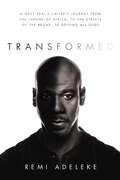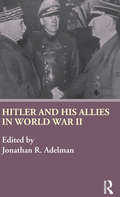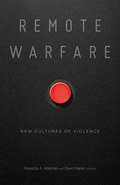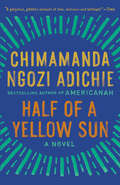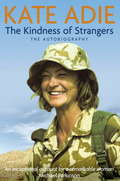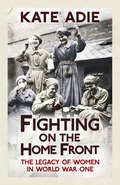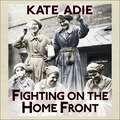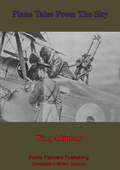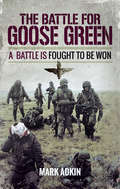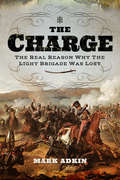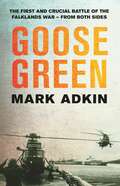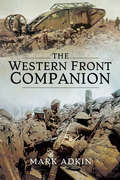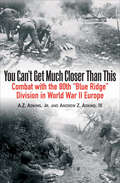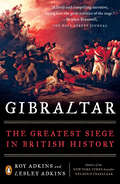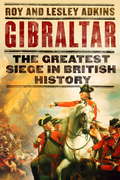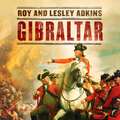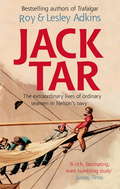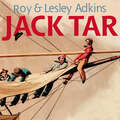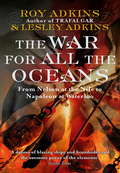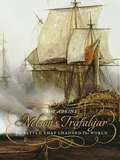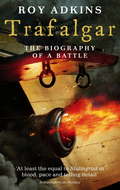- Table View
- List View
Transformed: A Navy SEAL’s Unlikely Journey from the Throne of Africa, to the Streets of the Bronx, to Defying All Odds
by Remi AdelekeWhat are the odds? Statistics tell us that African American males who grow up in a single-parent household are nine times more likely to drop out of high school and twenty times more likely to end up in prison than any other demographic. But what would it take for one young man not only to rise above those statistics but also become a Navy SEAL, actor, entrepreneur, writer, and successful husband and father?In Transformed, Remi Adeleke takes you back to stories from his childhood, from living as Nigerian royalty to losing his father early in life and being stripped financially of everything by the Nigerian government. He delves into being raised by a single mother in the Bronx and doesn’t shy away from his illegal activities as a young man that threatened to derail his future. At every turn, including throughout his naval career, Adeleke found a way to overcome the odds, even when it didn’t make sense. His is an inspiring story of true personal transformation.
Hitler and His Allies in World War Two
by Jonathan R. AdelmanIn an area where in-depth studies of Hitler's relations with Nazi Germany's allies, and the failure of Nazi Germany to make more effective use of them during the war, are scant, this is a survey that looks at the Soviet Union, Japan, France, Italy, Spain, Romania and Hungary and their relationship to Nazi Germany. Using a comparative approach, seven case studies examine themes such as co-operation and resistance, military and economic aid, treatment of Jews, relations with the enemies and the popular sentiment towards Germany. Jonathan Adelman has provided students of the Second World War with a welcome mine of information and a unique perspective on a much-studied topic.
Figuring Violence: Affective Investments in Perpetual War
by Rebecca A. AdelmanIn the United States, the early years of the war on terror were marked by the primacy of affects like fear and insecurity. These aligned neatly with the state’s drive toward intensive securitization and an aggressive foreign policy. But for the broader citizenry, such affects were tolerable at best and unbearable at worst; they were not sustainable. Figuring Violence catalogs the affects that define the latter stages of this war and the imaginative work that underpins them. These affects—apprehension, affection, admiration, gratitude, pity, and righteous anger—are far more subtle and durable than their predecessors, rendering them deeply compatible with the ambitions of a state embroiling itself in a perpetual and unwinnable war.Surveying the cultural landscape of this sprawling conflict, Figuring Violence reveals the varied mechanisms by which these affects have been militarized. Rebecca Adelman tracks their convergences around six types of beings: civilian children, military children, military spouses, veterans with PTSD and TBI, Guantánamo detainees, and military dogs. All of these groups have become preferred objects of sentiment in wartime public culture, but they also have in common their status as political subjects who are partially or fully unknowable. They become visible to outsiders through a range of mediated and imaginative practices that are ostensibly motivated by concern or compassion. However, these practices actually function to reduce these beings to abstracted figures, silencing their political subjectivities and obscuring their suffering. As a result, they are erased and rendered hypervisible at once. Figuring Violence demonstrates that this dynamic ultimately propagates the very militarism that begets their victimization.
Remote Warfare: New Cultures of Violence
by Rebecca A. Adelman David KieranConsiders how people have confronted, challenged, and resisted remote warfare Drone warfare is now a routine, if not predominant, aspect of military engagement. Although this method of delivering violence at a distance has been a part of military arsenals for two decades, scholarly debate on remote warfare writ large has remained stuck in tired debates about practicality, efficacy, and ethics. Remote Warfare broadens the conversation, interrogating the cultural and political dimensions of distant warfare and examining how various stakeholders have responded to the reality of state-sponsored remote violence.The essays here represent a panoply of viewpoints, revealing overlooked histories of remoteness, novel methodologies, and new intellectual challenges. From the story arc of Homeland to redefining the idea of a &“warrior,&” these thirteen pieces consider the new nature of surveillance, similarities between killing with drones and gaming, literature written by veterans, and much more. Timely and provocative, Remote Warfare makes significant and lasting contributions to our understanding of drones and the cultural forces that shape and sustain them.Contributors: Syed Irfan Ashraf, U of Peshawar, Pakistan; Jens Borrebye Bjering, U of Southern Denmark; Annika Brunck, U of Tübingen; David A. Buchanan, U.S. Air Force Academy; Owen Coggins, Open U; Andreas Immanuel Graae, U of Southern Denmark; Brittany Hirth, Dickinson State U; Tim Jelfs, U of Groningen; Ann-Katrine S. Nielsen, Aarhus U; Nike Nivar Ortiz, U of Southern California; Michael Richardson, U of New South Wales; Kristin Shamas, U of Oklahoma; Sajdeep Soomal; Michael Zeitlin, U of British Columbia.
Half of a Yellow Sun
by Chimamanda Ngozi Adichie<P>With effortless grace, celebrated author Chimamanda Ngozi Adichie illuminates a seminal moment in modern African history: Biafra's impassioned struggle to establish an independent republic in southeastern Nigeria during the late 1960s. <P>We experience this tumultuous decade alongside five unforgettable characters: Ugwu, a thirteen-year-old houseboy who works for Odenigbo, a university professor full of revolutionary zeal; Olanna, the professor’s beautiful young mistress who has abandoned her life in Lagos for a dusty town and her lover’s charm; and Richard, a shy young Englishman infatuated with Olanna’s willful twin sister Kainene. <P>Half of a Yellow Sun is a tremendously evocative novel of the promise, hope, and disappointment of the Biafran war. <P><b>Winner of the 2007 Orange Prize for Fiction</b>
The Autobiography: The Kindness of Strangers
by Kate AdieKate Adie's story is an unusual one. Raised in post-war Sunderland, where life was 'a sunny experience, full of meat-paste sandwiches and Sunday school', she has reported memorably and courageously from many of the world's trouble spots since she joined the BBC in 1969. THE KINDNESS OF STRANGERS encompasses Adie's reporting from, inter alia, Northern Ireland, the Middle East, Tiananmen Square and, of course, the Gulf War of 1991. It offers a compelling combination of vivid frontline reporting and evocative writing and reveals the extraordinarily demanding life of the woman who is always at the heart of the action. Although an intensely private person, Kate Adie also divulges what it's like to be a woman in a man's world - an inspiration to many working women.
The Autobiography: The Kindness of Strangers
by Kate AdieKate Adie's story is an unusual one. Raised in post-war Sunderland, where life was 'a sunny experience, full of meat-paste sandwiches and Sunday school', she has reported memorably and courageously from many of the world's trouble spots since she joined the BBC in 1969. THE KINDNESS OF STRANGERS encompasses Adie's reporting from, inter alia, Northern Ireland, the Middle East, Tiananmen Square and, of course, the Gulf War of 1991. It offers a compelling combination of vivid frontline reporting and evocative writing and reveals the extraordinarily demanding life of the woman who is always at the heart of the action. Although an intensely private person, Kate Adie also divulges what it's like to be a woman in a man's world - an inspiration to many working women.
Fighting on the Home Front: The Legacy of Women in World War One
by Kate Adie'History at its most celebratory' Daily Telegraph'Adie uses her journalistic eye for personal stories and natural compassion to create a book definitely worthy of her heroines' Big Issue'Fascinating, very readable . . . provides a complete wartime women's history' Discover Your History* * * * * *Bestselling author and award-winning former BBC Chief News Correspondent Kate Adie reveals the ways in which women's lives changed during World War One and what the impact has been for women in its centenary year.IN 1914 THE WORLD CHANGED forever. When World War One broke out and a generation of men went off to fight, bestselling author and From Our Own Correspondent presenter Kate Adie shows how women emerged from the shadows of their domestic lives.Now a visible force in public life, they began to take up essential roles - from transport to policing, munitions to sport, entertainment, even politics. They had finally become citizens, a recognised part of the war machine, acquiring their own rights and often an independent income.The former BBC Chief News Correspondent charts the seismic move towards equal rights with men that began a century ago and through unique first-hand research shows just how momentous the achievements of those pioneering women were.This is history at its best - a vivid, compelling account of the women who helped win the war as well as a revealing assessment of their legacy for women's lives today.
Fighting on the Home Front: The Legacy of Women in World War One
by Kate Adie'History at its most celebratory' Daily Telegraph'Adie uses her journalistic eye for personal stories and natural compassion to create a book definitely worthy of her heroines' Big Issue'Fascinating, very readable . . . provides a complete wartime women's history' Discover Your History* * * * * *Bestselling author and award-winning former BBC Chief News Correspondent Kate Adie reveals the ways in which women's lives changed during World War One and what the impact has been for women in its centenary year.IN 1914 THE WORLD CHANGED forever. When World War One broke out and a generation of men went off to fight, bestselling author and From Our Own Correspondent presenter Kate Adie shows how women emerged from the shadows of their domestic lives.Now a visible force in public life, they began to take up essential roles - from transport to policing, munitions to sport, entertainment, even politics. They had finally become citizens, a recognised part of the war machine, acquiring their own rights and often an independent income.The former BBC Chief News Correspondent charts the seismic move towards equal rights with men that began a century ago and through unique first-hand research shows just how momentous the achievements of those pioneering women were.This is history at its best - a vivid, compelling account of the women who helped win the war as well as a revealing assessment of their legacy for women's lives today.
Fighting on the Home Front: The Legacy of Women in World War One
by Kate Adie'History at its most celebratory' Daily Telegraph'Adie uses her journalistic eye for personal stories and natural compassion to create a book definitely worthy of her heroines' Big Issue'Fascinating, very readable . . . provides a complete wartime women's history' Discover Your History* * * * * *Bestselling author and award-winning former BBC Chief News Correspondent Kate Adie reveals the ways in which women's lives changed during World War One and what the impact has been for women in its centenary year.IN 1914 THE WORLD CHANGED forever. When World War One broke out and a generation of men went off to fight, bestselling author and From Our Own Correspondent presenter Kate Adie shows how women emerged from the shadows of their domestic lives.Now a visible force in public life, they began to take up essential roles - from transport to policing, munitions to sport, entertainment, even politics. They had finally become citizens, a recognised part of the war machine, acquiring their own rights and often an independent income.The former BBC Chief News Correspondent charts the seismic move towards equal rights with men that began a century ago and through unique first-hand research shows just how momentous the achievements of those pioneering women were.This is history at its best - a vivid, compelling account of the women who helped win the war as well as a revealing assessment of their legacy for women's lives today.(P)2014 Isis Publishing
Plane Tales From The Sky
by Wing Adjutant"Air Combat over the trenches by those who foughtThe first-hand accounts of the experiences of men in time of war always make fascinating reading. Their stories are, of course, always as varied as the individuals concerned and the eras to which they belonged, whether they were soldiers, sailors or airmen, the branch of their service, their nationalities, the conflict in which they were participants and in which theatre they fought. This is what makes military history so fascinating. Sometimes many men report a common experience that abided for decades. Occasionally we hear, across time, the voices of a few notable men who fought their own war in their own special way and once their time had past history would never know their like again. That is especially true of the pilots of the First World war. The machinery of flight was a new technology. The aircraft were raw, basic, flimsy and unproven machines and both they and the brave men who piloted them were fighting their first conflict while learning and evolving their skills and equipment, quite literally, as they fought and died. The dogfight days of the early biplanes, triplanes and early mono winged fighters would be short, but their images together with those of the iconic airships which they ultimately destroyed will remain indelibly imprinted on the history of conflict and the development of man's mastery of the air. Heroes to a man, these trailblazers were almost always young, carefree, well-educated and modest young men full of the joy of living and commitment to their aircraft and to flying."-Leonaur Print VersionAuthor -- Wing Adjutant (Pseud.)Text taken, whole and complete, from the edition published in London, New York, Cassell and company, ltd., 1918.Original Page Count - 182 pages
The Battle for Goose Green: A Battle is Fought to be Won (Cassell Military Paperbacks Series)
by Mark Adkin&“Probably the best and most detailed description of a key battle in the 1982 Falklands War . . . an excellent and fast paced narrative.&” —Michael McCarthy, historical battlefield guide This book tells the story of the battle for Goose Green—the first crucial clash of the Falklands War—through the eyes of the commanders, both British and Argentine, from brigadier to corporal. It follows in detail, with the aid of maps, the fourteen hours of vicious infantry as both sides struggled for the tiny settlement of Goose Green. The book explains how 2 Para came close to failure as the battalion fought over open ground, in daylight, without adequate fire support against prepared positions. Controversial questions—such as: Was it an unnecessary battle? Why did London overrule the brigadier commander&’s reluctance to attack? Did Col. Jones&’s solo charge, which won him the Victoria Cross, decide the issue?—are discussed frankly. The author, himself a former infantry officer, has had the full support of the Parachute Regiment, and has assembled the views and comments of over forty-five veterans of all ranks who fought there. &“The Falklands War showed British military personnel at their best and most innovative under the most testing of conditions, and the Battle of Goose Green was one of the classic actions . . . The author has made an impressive job of reviewing the important factors, the events and decisions that led to the battle.&” —Firetrench &“This brought home to me how the infantry fight and how the British Paratrooper has gained a worldwide reputation for being one of the best fighting men around. A superb read.&” —Army Rumour Service
The Charge: The Real Reason Why the Light Brigade Was Lost
by Mark AdkinUnravels facts from fiction about one of the most controversial episodes in military history: the British cavalry&’s Crimean War disaster. This book shatters many long-held conceptions of how and why this military action happened, and who was to blame. You&’ll ride with the Regiments down the valley, visit the Russian guns as they frantically fire from three sides, before limping painfully back up the valley with the survivors. The story switches skillfully from the strategic and tactical problems of the battlefield to what it was like for the trooper in the valley or a Russian gunner serving his cannon. Through the novel use of sketches you can, at every stage, look down the on the battlefield from the same position as that used by the British commander-in-chief, Lord Raglan. You&’ll see the situation as Raglan saw it when he gave each of his infamous four orders that led to the charge. The fourth order, that launched the Brigade down the valley of death, involved four &“horsemen of calamity.&” Raglan gave the order, Captain Nolan delivered it, Lord Lucan received it, and the Earl of Cardigan executed it. History has disagreed over the share of the blame. The author makes a masterly analysis of the probabilities and discusses factors previously overlooked. There is a cogent argument, never made before, that the blunder was deliberate. This book is probably the closest we will ever get to the truth about the charge of the Light Brigade.
Goose Green: The first crucial battle of the Falklands War
by Mark AdkinReissued for the 40th anniversary of the Falklands conflictThe most in-depth and powerful account yet published of the first crucial clash of the Falklands war - told from both sides.'Thorough and exhaustive' Daily Telegraph'An excellent and fast paced narrative' Michael McCarthy, historical battlefield guideGoose Green was the first land battle of the Falklands War. It was also the longest, the hardest-fought, the most controversial and the most important to win. What began as a raid became a vicious, 14-hour infantry struggle, in which 2 Para - outnumbered, exhausted, forced to attack across open ground in full daylight, and with inadequate fire support - lost their commanding officer, and almost lost the action.This is the only full-length, detailed account of this crucial battle. Drawing on the eye-witness accounts of both British and Argentinian soldiers who fought at Goose Green, and their commanders' narratives, it has become the definitive account of most important and controversial land battle of the Falklands War. A compelling story of men engaged in a battle that hung in the balance for hours, in which Colonel 'H' Jones' solo charge against an entrenched enemy won him a posthumous V.C., and which for both sides was a gruelling and often terrifying encounter.
Goose Green: The first crucial battle of the Falklands War
by Mark AdkinReissued for the 40th anniversary of the Falklands conflictThe most in-depth and powerful account yet published of the first crucial clash of the Falklands war - told from both sides.'Thorough and exhaustive' Daily Telegraph'An excellent and fast paced narrative' Michael McCarthy, historical battlefield guideGoose Green was the first land battle of the Falklands War. It was also the longest, the hardest-fought, the most controversial and the most important to win. What began as a raid became a vicious, 14-hour infantry struggle, in which 2 Para - outnumbered, exhausted, forced to attack across open ground in full daylight, and with inadequate fire support - lost their commanding officer, and almost lost the action.This is the only full-length, detailed account of this crucial battle. Drawing on the eye-witness accounts of both British and Argentinian soldiers who fought at Goose Green, and their commanders' narratives, it has become the definitive account of most important and controversial land battle of the Falklands War. A compelling story of men engaged in a battle that hung in the balance for hours, in which Colonel 'H' Jones' solo charge against an entrenched enemy won him a posthumous V.C., and which for both sides was a gruelling and often terrifying encounter.
The Western Front Companion: The Complete Guide To How The Armies Fought For Four Devastating Years, 1914-1918
by Mark AdkinTO COMPREHEND AND CHRONICLE the sheer scale of the conflict on the Western Front demands a book of similar scope. Now, published for the centenary of the start of World War I in August 2014, here is that book. Written by the author of the three previous bestselling Companions on Waterloo, Trafalgar and Gettysburg now acclaimed as the definitive work of reference on each battle The Western Front Companion is not a mere chronological account of the fighting. Rather, it is an astonishingly comprehensive and forensic anatomy of how and why the armies fought, of their weapons, equipment and tactics, for over four long and bloody years on a battlefield that stretched from the Belgian coast to the Swiss frontier a distance of 450 miles. Alongside the British Army, full coverage is given to Britains allies France, Belgium, Australia, New Zealand, Canada, South Africa, India and the United States as well as the Germans.The 350,000 words of text range over everything from the railways on the front to the medical corps and the chaplains. An introduction explaining why the world went to war is followed by a year-by-year enumeration of the critical events and battles and then sections examining all branches of the armies, including commanders, staff, infantry, artillery, cavalry, engineers, supply and transport, veterinary, tanks and aviation, followed by one on trench warfare and another on the pivitol Battle of Cambrai with its massed use of tanks. Information boxes throughout cover further aspects, from valiant winners of the VC to the unique squalor of front-line trench life. An epilogue on the Armistice and the cost of the war tells how the Unknown Warrior was selected and buried in Westminster Abbey. Like previous Companions, this book is equally distinguished by its magnificent visual resources, and above all its plethora of original and intricate maps and diagrams, all in full colour, illustrating particular offensives, battles, raids or tactics, the configurations of trench formations or the trajectory of mortar bombardments. But this conflict was also the first to be chronicled from the start by photography, and The Western Front Companion does it full justice, with over 200 resonant and remarkable archive images from the time, many rarely seen. These are complemented with modern colour photographs showing how historic battlefields look nowadays, and paying tribute to the magnificent and poignant cemeteries, monuments and ossuaries that mark the fallen for todays battlefield visitor. Every reader, no matter how well informed already on the history of World War I, will learn something new from this extraordinary and exhaustive volume. No one interested in the true story and sheer sweep of the Great War on the Western Front can afford to be without it.
You Can't Get Much Closer Than This: Combat With the 80th "Blue Ridge" Division in World War II Europe
by A.Z. Adkins Jr. Andrew Z. Adkins IIIA young soldier’s memoirs of fighting in WWII: “Fascinating . . . A personal record like this is a valuable resource to anyone interested in the period”(Military Model Scene).After the Citadel and Officer Candidate School, Andrew Z. Adkins Jr., was sent to the 80th Infantry Division, then training in the California-Arizona desert. There, he was assigned as an 81mm mortar section leader in Company H, 2nd Battalion, 317th Infantry Regiment.When the division completed training in December 1943, it was shipped in stages to the United Kingdom and then Normandy, where it landed on August 3, 1944. Lieutenant Adkins and his fellow soldiers took part in light hedgerow fighting that served to shake the division down and familiarize the troops and their officers with combat. The first real test came within weeks, when the 2nd Battalion, 317th Infantry, attacked high ground near Argentan during the drive to seal German forces in the Falaise Pocket. While scouting for mortar positions in the woods, Adkins met a group of Germans and shot one of them dead with his carbine. This baptism in blood settled the question faced by every novice combatant: He was cool under fire, capable of killing when facing the enemy. He later wrote, “It was a sickening sight, but having been caught up in the heat of battle, I didn’t have a reaction other than feeling I had saved my own life.”Thereafter, the 2nd Battalion, 317th Infantry, took part in bloody battles across France, sometimes coping with inept leadership and grievous losses, even as it took hills and towns away from the Germans. In the fighting graphically portrayed here, Adkins acted with skill and courage, placing himself at the forefront of the action whenever he could. His extremely aggressive delivery of critical supplies to a cut-off unit in an embattled French town earned him a Bronze Star, the first in his battalion.This is a story of a young soldier at war, a junior officer’s coming of age amid pulse-pounding combat. Before his death, Andy Adkins was able to face his memory of war as bravely as he faced war itself. He put it on paper, honest and unflinching. In 1944-45, he did his duty to his men and country—and here, he serves new generations of military and civilian readers.
Gibraltar: The Greatest Siege in British History
by Lesley Adkins Roy AdkinsA rip-roaring account of the dramatic four-year siege of Britain’s Mediterranean garrison by Spain and France—an overlooked key to the British loss in the American RevolutionFor more than three and a half years, from 1779 to 1783, the tiny territory of Gibraltar was besieged and blockaded, on land and at sea, by the overwhelming forces of Spain and France. It became the longest siege in British history, and the obsession with saving Gibraltar was blamed for the loss of the American colonies in the War of Independence.Located between the Mediterranean and Atlantic, on the very edge of Europe, Gibraltar was a place of varied nationalities, languages, religions, and social classes. During the siege, thousands of soldiers, civilians, and their families withstood terrifying bombardments, starvation, and disease. Very ordinary people lived through extraordinary events, from shipwrecks and naval battles to an attempted invasion of England and a daring sortie out of Gibraltar into Spain. Deadly innovations included red-hot shot, shrapnel shells, and a barrage from immense floating batteries.This is military and social history at its best, a story of soldiers, sailors, and civilians, with royalty and rank and file, workmen and engineers, priests, prisoners of war, spies, and surgeons, all caught up in a struggle for a fortress located on little more than two square miles of awe-inspiring rock. Gibraltar: The Greatest Siege in British History is an epic page-turner, rich in dramatic human detail—a tale of courage, endurance, intrigue, desperation, greed, and humanity. The everyday experiences of all those involved are brought vividly to life with eyewitness accounts and expert research.
Gibraltar: The Greatest Siege in British History
by Lesley Adkins Roy AdkinsFor over three and a half years, from 1779 to 1783, the tiny territory of Gibraltar was besieged and blockaded, on land and at sea, by the overwhelming forces of Spain and France. It became the longest siege in British history, and the obsession with saving Gibraltar was blamed for the loss of the American colonies in the War of Independence. Located between the Mediterranean and Atlantic, on the very edge of Europe, Gibraltar was a place of varied nationalities, languages, religions and social classes. During the siege, thousands of soldiers, civilians and their families withstood terrifying bombardments, starvation and diseases. Very ordinary people lived through extraordinary events, from shipwrecks and naval battles to an attempted invasion of England and a daring sortie out of Gibraltar into Spain. Deadly innovations included red-hot shot, shrapnel shells and a barrage from immense floating batteries.This is military and social history at its best, a story of soldiers, sailors and civilians, with royalty and rank-and-file, workmen and engineers, priests, prisoners-of-war, spies and surgeons, all caught up in a struggle for a fortress located on little more than two square miles of awe-inspiring rock. Gibraltar: The Greatest Siege in British History is an epic page-turner, rich in dramatic human detail - a tale of courage, endurance, intrigue, desperation, greed and humanity. The everyday experiences of all those involved are brought vividly to life with eyewitness accounts and expert research.
Gibraltar: The Greatest Siege in British History
by Lesley Adkins Roy AdkinsFor over three and a half years, from 1779 to 1783, the tiny territory of Gibraltar was besieged and blockaded, on land and at sea, by the overwhelming forces of Spain and France. It became the longest siege in British history, and the obsession with saving Gibraltar was blamed for the loss of the American colonies in the War of Independence. Located between the Mediterranean and Atlantic, on the very edge of Europe, Gibraltar was a place of varied nationalities, languages, religions and social classes. During the siege, thousands of soldiers, civilians and their families withstood terrifying bombardments, starvation and diseases. Very ordinary people lived through extraordinary events, from shipwrecks and naval battles to an attempted invasion of England and a daring sortie out of Gibraltar into Spain. Deadly innovations included red-hot shot, shrapnel shells and a barrage from immense floating batteries.This is military and social history at its best, a story of soldiers, sailors and civilians, with royalty and rank-and-file, workmen and engineers, priests, prisoners-of-war, spies and surgeons, all caught up in a struggle for a fortress located on little more than two square miles of awe-inspiring rock. Gibraltar: The Greatest Siege in British History is an epic page-turner, rich in dramatic human detail - a tale of courage, endurance, intrigue, desperation, greed and humanity. The everyday experiences of all those involved are brought vividly to life with eyewitness accounts and expert research.'A fascinating, well-crafted account of a siege that defined Britishness' Andrew Lambert, BBC History Magazine
Jack Tar: Life in Nelson's Navy
by Lesley Adkins Roy AdkinsThe Royal Navy to which Admiral Lord Nelson sacrificed his life depended on thousands of sailors and marines to man the great wind-powered wooden warships. Drawn from all over Britain and beyond, often unwillingly, these ordinary men made the navy invincible through skill, courage and sheer determination. Yet their contribution is frequently overlooked, while the officers became celebrities. JACK TAR gives these forgotten men a voice in an exciting, enthralling, often unexpected and always entertaining picture of what their life was really like during this age of sail. Through personal letters, diaries and other manuscripts, the emotions and experiences of these people are explored, from the dread of press-gangs, shipwreck and disease, to the exhilaration of battle, grog, prize money and prostitutes. JACK TAR is an authoritative and gripping account that will be compulsive reading for anyone wanting to discover the vibrant and sometimes stark realities of this wooden world at war.
Jack Tar: Life in Nelson's Navy
by Lesley Adkins Roy Adkins'An enthralling book' Sunday Telegraph'Fascinating' Sunday TimesThe Royal Navy to which Admiral Lord Nelson sacrificed his life depended on thousands of sailors and marines to man the great wind-powered wooden warships. Drawn from all over Britain and beyond, often unwillingly, these ordinary men made the navy invincible through skill, courage and sheer determination. They cast a long shadow, with millions of their descendants alive today, and many of their everyday expressions, such as 'skyscraper' and 'loose cannon', continuing to enrich our language. Yet their contribution is frequently overlooked, while the officers became celebrities. JACK TAR gives these forgotten men a voice in an exciting, enthralling, often unexpected and always entertaining picture of what their life was really like during this age of sail. Through personal letters, diaries and other manuscripts, the emotions and experiences of these people are explored, from the dread of press-gangs, shipwreck and disease, to the exhilaration of battle, grog, prize money and prostitutes. JACK TAR is an authoritative and gripping account that will be compulsive reading for anyone wanting to discover the vibrant and sometimes stark realities of this wooden world at war.
The War For All The Oceans: From Nelson at the Nile to Napoleon at Waterloo
by Lesley Adkins Roy AdkinsAs France emerged from revolution, a young general named Napoleon Bonaparte invaded Egypt, hoping next to march overland to India. It would not happen. Britain swung her forces into action to battle for control of the world's sea-lanes and thus all international trade. The Battle of the Nile and then at Acre were the first sallies in what would be fifteen years of bitter fighting. It was a war won at sea, and by the time of Waterloo Britain had gained control and possessed the foundations of her vast empire.Brought vividly to life through the words and stories of the ordinary people caught up in the conflict, this is a sweeping history of the years of naval warfare that set the balance of power in Europe for the following century. Taking in gallant duels, bloody battles between huge fleets, amphibious assaults, daring coastal raids, and the subtleties of espionage and naval intelligence, this global conflict truly was THE WAR FOR ALL THE OCEANS.
Nelson's Trafalgar
by Roy AdkinsAn explosive chronicle of history's greatest sea battle In the tradition of Antony Beevor's Stalingrad, Nelson's Trafalgar presents the definitive blow-by-blow account of the world's most famous naval battle, when the British Royal Navy under Lord Horatio Nelson dealt a decisive blow to the forces of Napoleon. The Battle of Trafalgar comes boldly to life in this definitive work that re-creates those five momentous, earsplitting hours with unrivaled detail and intensity. .
Trafalgar: The Biography of a Battle
by Roy AdkinsThis is the true story of the Battle of Trafalgar, Britain's most significant sea battle, as seen through the smoke-hazed gunports of the fighting ships. In an atmosphere of choking fumes from cannon and musket fire, amid noise so intense it was almost tangible, the crews of the British, French and Spanish ships did their best to carry out their allotted tasks. For over five hours they were in constant danger from a terrifying array of iron and lead missiles fired from enemy guns, as well as the deadly wooden splinters smashed from the ships' hulls by the cannon-balls. While the men manoeuvred the ships and kept the cannons firing, the women helped the surgeons tend the sick or helped the boys - the 'powder monkeys' - in the hazardous job of carrying gunpowder cartridges from the central magazine to the gun decks. Trafalgar set the seal on British naval supremacy, which became the mainspring for the growth of the British Empire, and in the short term not only prevented Napoleon from invading Britain, but also enabled Britain and its Continental allies to mount the campaign that would eventually defeat the French Emperor: without Trafalgar there would be no Waterloo.
